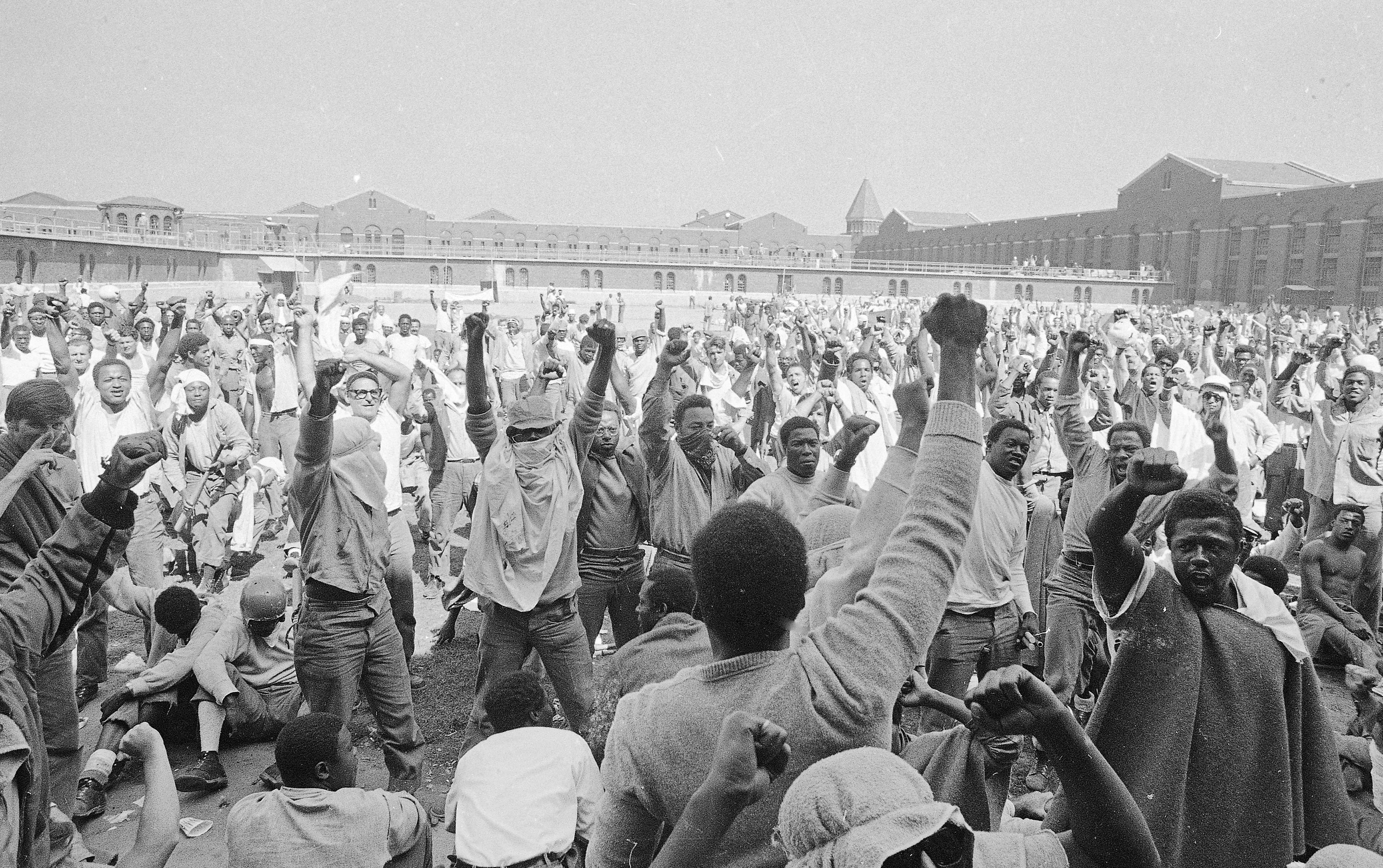What was the Attica prisoner uprising 50 years ago?
The uprising inspired both activists and tough on crime policies in its wake

Your support helps us to tell the story
From reproductive rights to climate change to Big Tech, The Independent is on the ground when the story is developing. Whether it's investigating the financials of Elon Musk's pro-Trump PAC or producing our latest documentary, 'The A Word', which shines a light on the American women fighting for reproductive rights, we know how important it is to parse out the facts from the messaging.
At such a critical moment in US history, we need reporters on the ground. Your donation allows us to keep sending journalists to speak to both sides of the story.
The Independent is trusted by Americans across the entire political spectrum. And unlike many other quality news outlets, we choose not to lock Americans out of our reporting and analysis with paywalls. We believe quality journalism should be available to everyone, paid for by those who can afford it.
Your support makes all the difference.On 9 September, 1971, a group of inmates were locked in a tunnel in Attica State Prison in upstate New York, a punishment for a fight that took place between an inmate and a prison guard the day before.
Thinking they were about to be attacked by more prison personnel, whom they deemed the “goon squad,” after the all-white corps of guards had subjected the mostly Black prison population to years of racist abuse, the group of men rebelled.
Soon, they had busted out of the corridor and taken control of the rest of the prison. What followed, 50 years ago this week, was America’s most famous prison uprising, which ended in a violent siege from hundreds of state police, who killed 29 prisoners and 10 state employees as they fired indiscriminately into the facility through clouds of tear gas.
Tensions had been simmering inside the facility in upstate New York for months. Medical care was poor, and prisoners’ teeth often fell out. Incarcerated people didn’t have adequate access to toilet paper or soap, and worked in sweltering conditions inside prison workshops for little pay.
In July of 1971, inmates organising themselves into a group called the Attica Liberation Faction sent a letter to Russell Oswald, New York’s commissioner of corrections, pleading for better conditions, which didn’t materialise.
That August, things deteriorated further when inmates learned that Black Panther leader George Jackson had been killed in California’s San Quentin prison. Many of the more politically outspoken Black inmates at Attica felt they were singled out for extra abuse.
Then on 8 September, a fight between an incarcerated person and a guard sent rumours flying through the fortress-like, Depression-era facility, that guards had killed the inmate that night in retaliation.
Once the group of roughly 1,300 prisoners took over the prison, they took 42 officers and civilian employees as hostages, and conducted tense negotiations with outside authorities and reiterated their demands for better conditions.
Throughout the process, snipers on nearby roofs kept rifles trained on the inmates and jeered them, while federal authorities like the Army, Navy, Marines, CIA, and even the president were monitoring the situation.
Richard Nixon, captured on White House recordings of phone calls, was heard talking with open racial paranoia about the uprising, in keeping with his famous, Republican-party defining embrace of law and order politics.
“Is this a Black thing? Was this started by the Black?” he asked New York governor Nelson Rockefeller in one call.
Four days after the occupation began, police sent in a brutal force to crush it, with nearly 600 men storming the facility. Officers fired CS gas over the prison yard, and fired indiscriminately into the smoke, killing 29 prisoners and 10 state employees.
Some ripped their badges off, while others shot prisoners after they surrendered. Survivors, especially leaders of the uprising like Frank “Big Black” Smith, were tortured.
As the situation escalated, prison officials and federal law enforcement spread false information about prisoners castrating guards and slitting their throats, stories which appeared in the media but were later disproven.
Meanwhile, other officers altered statements, tampered with audiovisual evidence, and got the worst offenders during the siege, where prisoners killed a single guard, to resign before they could face discipline.
No police were ever put on trial for the killings during the siege, but 52 inmates were indicted on a cumulative 1,400 or so crimes, one of the largest criminal prosecutions in US history.
The Attica Uprising is credited not only with the birth of the modern prisoners’ rights movement, but with helping fuel the decades of tough on crime and prison policies that helped America come to have the largest percentage of its population incarcerated of any nation on Earth.
Authorities eventually reached financial settlements with the families of inmates and prison employees, paying them a total of $8 million and $12 million, respectively.
Survivors, as well as the families of those killed in the massacre, have continued to push for the release of confidential records regarding Attica and the trials that followed. A bill in the New York legislature would release previously sealed grand jury testimony that could include some of the Attica cases.
The conditions that the Attica inmates were protesting — poor health care, lack of career advancement — persist in US prisons today, which have seen devastating Covid outbreaks since 2020.
Join our commenting forum
Join thought-provoking conversations, follow other Independent readers and see their replies
101Comments